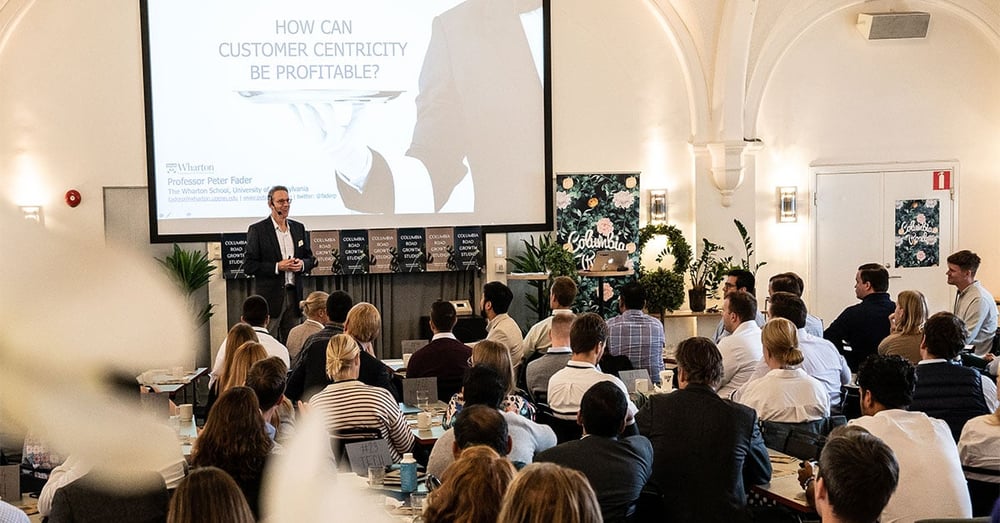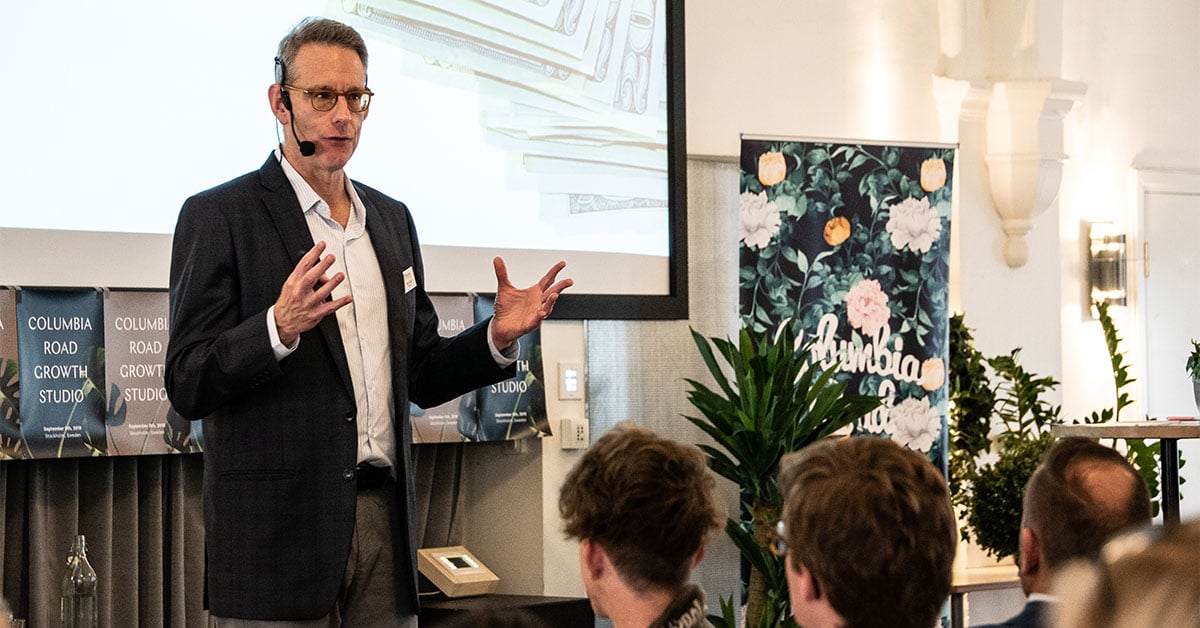The Data Handbook
How to use data to improve your customer journey and get better business outcomes in digital sales. Interviews, use cases, and deep-dives.
Get the book
In roughly two weeks, we at Columbia Road are excited to welcome Dr Peter Fader, one of the most esteemed customer analytics and customer loyalty experts to share his insights in our webinar Loyalty: In it to win it in digital sales. If you clicked on this blog, this is a webinar you don't want to miss – we'll also delve into the topic from companies' angle, with Nordic companies such as Finnair, Youty Group and Reima.
We're looking forward to hearing what Professor Fader's most recent research in customer loyalty programs and strategies has revealed, but in the meanwhile, this blog recaps our most valuable learnings from our previous event with Dr. Peter Fader. At Growth Studio, Dr. Fader zoomed in on the vital benefits of finding and focusing on the right, most loyal customers.
"All customers are not created equal”
Customer centricity is based on the notion that the best customers, the ones you should focus on, is the ones with the highest customer lifetime value, CLV. Meaning, like our own Lauri Eurén so eloquently breaks it down: “To put more simply, it’s the customer’s historic and future revenues subtracted by all the costs attributed to the customer”.
But if not all customers are created equal, why do many companies insist on treating them as such? Why do so many use the same metrics for their entire customer base, and more importantly, how can a company monetise on customer centricity?
The answer, according to Dr Fader, lies in focusing on costs and averages instead of value when planning and executing marketing activities. Most companies have become accustomed to evaluating, planning and measuring all marketing activities from customer acquisition, customer retention and customer development based on the "average customer" and their cost. To become customer-centric, you need to start looking at customers, and the value they can bring in a different way.
Focus on Value Per Acquisition instead of Cost Per Acquisition
Closing in on the topic of customer centricity in regards to customer acquisition Dr Fader continued by stating, “We want the best, not the cheapest. Use lifetime value to drive acquisition - it’s like printing money.” The idea that you will get the most bang for your buck, so to speak, by using cost as a metric to allocate your marketing budget on acquisition tactics is however flawed. It’s an easy trap to fall into given the numerous programs making costs such an easy metric to measure and tweak down to every last cent spent.
However, planning your spending on the basis of cost instead of value will lead you to underspend and underachieving. It might cost you less in the short term, but you will miss out on value in the long term. By shifting the focus from how much you are willing to pay for each customer to how much you want to pay to get the best ones, and allocating resources into finding them, you are setting your business up for long term profits from customers that bring the highest value for your company in the long run. Dare to look at acquisition in this way and see the value that rises.
 Celebrate customer heterogeneity
Celebrate customer heterogeneity
“Most companies are overspending on retention”
With that said, Dr Fader points out that spend on retention should still not be zero. The fact is, companies are overspending on retention activities due to ignoring heterogeneity. Evaluating your customers on the basis of how likely they are to stay, and bring your company revenue, is good. However, most companies make the mistake of aggregating customer data, determining their average customer, and then falling into the fallacy of catering their marketing tactics for that “average customer”.
Truth is, there is no average customer, and calculations based on such a notion will always underestimate the value of a customer base. What you should do is look at each group of customers separately: How long they are going to stay and bring value to your business. Then create an average, of each group, and treat them different from one another. Because they are!
Again, not all customers are created equal, and the right ones are going to stay longer, spend more and give you more value. Find them and treat them accordingly. Celebrate that heterogeneity and reap the benefits.
Customer development is the icing on the cake
Do you know what your company’s share of wallet is? Are you honing in on your marketing tactics to make this share bigger, to grow it? Most companies that care about customer development are. The tricky part is, the share of the wallet is highly reliant on the size of the wallet. Dr Fader poses the logical question “so, should all companies focus on the rich customers then?” The truth is, it doesn’t matter. What matters is if they love you or not, that is what’s going to make them come back.
Again, the goal of getting each customer to return and buy more is not what’s wrong here, it’s how it’s measured. You need to find the customers who will want to return, not the ones with the biggest wallets, per se. This brings us back to acquisition: you need to find out who those customers are and do everything you can to acquire them in the first place. It’s easier to move the needle via acquisition than with customer development, meaning it is better to acquire the right customers from the get-go rather than spending extensive efforts developing them later. Customer development is not unimportant, but look at it as the icing on the cake.
Dr Fader’s main point is clear, customer centricity can only succeed by “celebrating heterogeneity”. Not all customers are created equal. To truly get the highest value from your customers, you need to find the best ones and treat them as such. Becoming customer centric and using customer lifetime value to drive your marketing activities is the way to do it.
Watch our on-demand webinar to hear about Dr Peter Fader's recent research in customer loyalty programs and strategies. In addition to Dr Fader's keynote, we will have a panel discussion, where we will dive deeper into the topic from Nordic companies’ perspective. Hear what experts from Finnair, Youty Group and Reima have to say on the topic and learn to leverage customer loyalty to the fullest!
The Data Handbook
How to use data to improve your customer journey and get better business outcomes in digital sales. Interviews, use cases, and deep-dives.
Get the book




